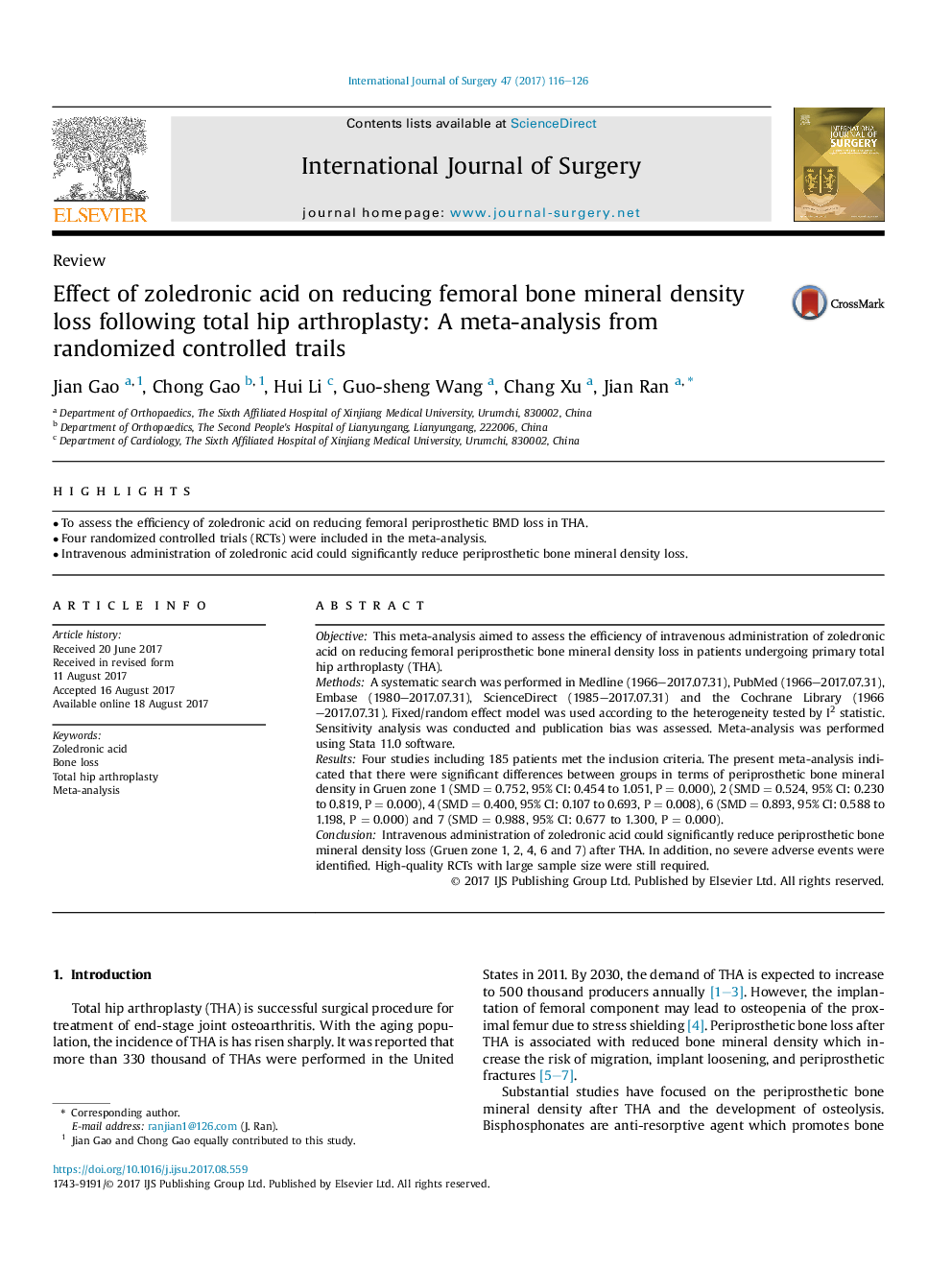| Article ID | Journal | Published Year | Pages | File Type |
|---|---|---|---|---|
| 5731703 | International Journal of Surgery | 2017 | 11 Pages |
â¢To assess the efficiency of zoledronic acid on reducing femoral periprosthetic BMD loss in THA.â¢Four randomized controlled trials (RCTs) were included in the meta-analysis.â¢Intravenous administration of zoledronic acid could significantly reduce periprosthetic bone mineral density loss.
ObjectiveThis meta-analysis aimed to assess the efficiency of intravenous administration of zoledronic acid on reducing femoral periprosthetic bone mineral density loss in patients undergoing primary total hip arthroplasty (THA).MethodsA systematic search was performed in Medline (1966-2017.07.31), PubMed (1966-2017.07.31), Embase (1980-2017.07.31), ScienceDirect (1985-2017.07.31) and the Cochrane Library (1966-2017.07.31). Fixed/random effect model was used according to the heterogeneity tested by I2 statistic. Sensitivity analysis was conducted and publication bias was assessed. Meta-analysis was performed using Stata 11.0 software.ResultsFour studies including 185 patients met the inclusion criteria. The present meta-analysis indicated that there were significant differences between groups in terms of periprosthetic bone mineral density in Gruen zone 1 (SMDÂ =Â 0.752, 95% CI: 0.454 to 1.051, PÂ =Â 0.000), 2 (SMDÂ =Â 0.524, 95% CI: 0.230 to 0.819, PÂ =Â 0.000), 4 (SMDÂ =Â 0.400, 95% CI: 0.107 to 0.693, PÂ =Â 0.008), 6 (SMDÂ =Â 0.893, 95% CI: 0.588 to 1.198, PÂ =Â 0.000) and 7 (SMDÂ =Â 0.988, 95% CI: 0.677 to 1.300, PÂ =Â 0.000).ConclusionIntravenous administration of zoledronic acid could significantly reduce periprosthetic bone mineral density loss (Gruen zone 1, 2, 4, 6 and 7) after THA. In addition, no severe adverse events were identified. High-quality RCTs with large sample size were still required.
